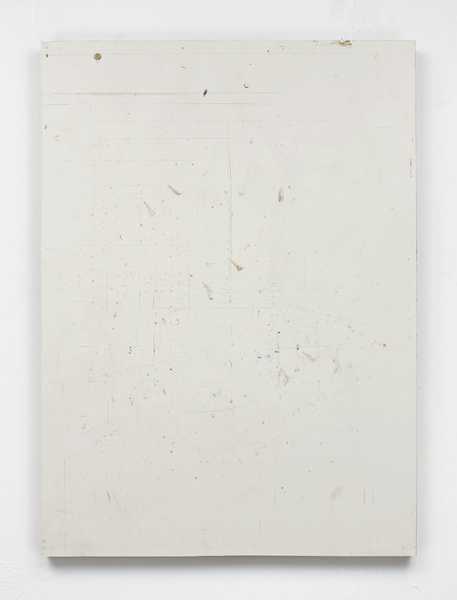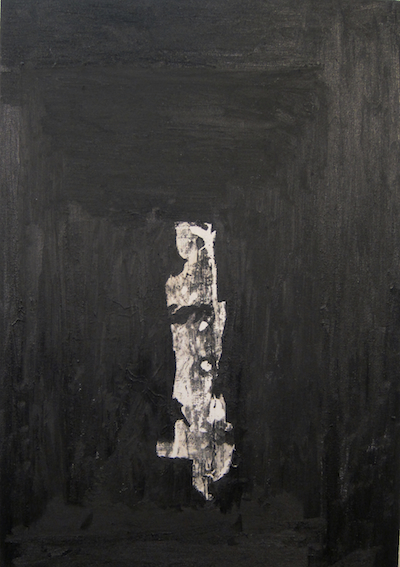Creature From the Blue Lagoon
organized by Bob Nickas
Martos Gallery summer location: 112 Sagaponack Rd., Bridgehampton NY 11932
July 21 – September 3, 2012
Opening Reception 2 – 6 pm (Liturgy to play at 5pm)
Creature from the Blue Lagoon
Last Group show at West Street
Dear Friends,
After two years, West Street Gallery will close. A final show will include works by each of the artists who contributed to the project. The exhibition will be on view June 22–July 7.
West Street Gallery was founded in 2009 by Alex Gartenfeld and Matt Moravec, and subsequently involved nearly two-dozen exhibitions, talks, screenings and readings. We are grateful to all of the artists who participated, and we are proud to have showed significant and often times first projects by emerging international artists.
Perhaps the most important element of West Street is our community. This network of activity will continue on. Alex and Matt are excited for our forthcoming projects—both independently and as collaborators. Thank you for your support.
An after-party will be held in conjuction with 47 Canal, location forthcoming.
Artists in exhibiton: Michele Abeles, Sam Anderson, Trisha Baga, Ian Cheng, Sam Falls, Ryan Foerster, Brendan Fowler, Greg Fong, Van Hanos, Ian Hokin, Zak Kitnick, Erik Lindman, Andrea Longacre-White, Jo Nigogohossian, Dominic Nurre, Eric Palgon, Asher Penn, Grayson Revoir, Julia Rommel, David Scanavino, Dan Shaw-Town, Ryan Sullivan, Kyle Thurman, Josh Tonsfeldt, Kon Trubkovich, Daniel Turner, Ryan Wolfe
Telephone Paintings
On the occasion of the 43rd edition of Art Basel, Almine Rech Gallery has commissioned Nicolas Trembley to curate its booth on the subject of ‘process painting’.
The starting point for this exhibition, and the inspiration for the title, is the seminal Konstruktion in Emaille by László Moholy-Nagy. In 1923 the artist, who was then teaching at the Bauhaus, telephoned an enamel plaque factory to commission three pieces composed of abstract lines in primary colors set against a white background: they were collectively called the Telephone Pictures.
By delegating the production of his work to someone who is not an artist, by shifting production from the studio to a factory, and thus ultimately entrusting it to machinery, Moholy-Nagy was among the first to challenge the classical and romantic notion of the artist as the unique author of his or her work.
The idea of manufacturing being at the heart of the present exhibition, Almine Rech Gallery, in close collaboration with the Moholy-Nagy Estate, has been able to have the three existing plaques reproduced by one of the last industrial enamel factories still in activity.
The exhibition Telephone Paintings gathers 30 works that span a century of artistic creativity and raise questions relating to notions of process, delegation, mechanical reproduction, image circulation, as well as the concept of the original and its reproductions. Of the 30 selected artists, most are represented by Almine Rech Gallery, while others have been invited to take part due to the pertinence of their work in relation to the theme.
Thus, Pablo Picasso, who is featured with a historical monotype depicting two women, echoes a recent silk-screened Joke Painting by Richard Prince, who in turn provides an ironic take on a two-headed woman. Kurt Schwitters’ collages are flanked by a series of images sourced from the civil rights demonstrations that took place in the United States in the 1960s. Initially published in Life magazine or The New York Times, these photographs were later pirated by artists such as Andy Warhol for the various formats of his Race Riot paintings, or more recently by Kelley Walker for the Black Star Press series.
Once chosen, the works generated their own logic for their hanging on the John Armleder wallpaper, which was commissioned by telephone from a specialized manufacturer. This ‘room’ of painting is fitted with furniture designed by Franz West that accentuates its domestic nature.
If Moholy-Nagy made the move from studio to factory, we have moved from the gallery to a domestic setting whose inhabitants are present: a surrogate body in the form of a t-shirt by Joe Bradley; a slim silhouette represented by John McCracken’s Plank; and lastly, a couple in a cognac advertisement appropriated by Jeff Koons for his 1980s Luxury and Degradation series. Three ambiances gradually emerged on the three main walls of the exhibition along chromatic lines: morning, afternoon and evening.
But beyond this scripted fiction, Telephone Paintings raises one of the key issues in art history, one that keeps returning to the fore: abstraction. How do ‘un-painted paintings’ composed of neutral forms continue to communicate today, and why do they do so? What do they tell us? How do we qualify them, and how do we define their singularity?
A 150 page catalogue will be published on the occasion of the exhibition. It brings together the works in the exhibition and offers a behind-the-scenes glimpse into the production process. Through as yet unseen documentary photographs, the artists reveal how they manufacture, or commission, their works.
“Traces” at ACME, Los Angeles
Traces, a three artist show, will open February 11th, 2012 at ACME
Image: Shirt Found Surface (Paperboard, Paint) Emulsion on Panel (Uncradled MDF) 14″x 10″x 3/8″ 2012.
“Studio” at Ribordy Contemporary, Geneva
Studio, a solo exhibition at Ribordy Contemporary, opens January 19th, 2012.
ERIK LINDMAN ‘Studio’
Press Release
Cut, paste, staple, tear, reassemble: it is around the act and process that Erik Lindman’s works are elaborated. Working with existing elements – waste, objects of the studio, pieces of works abandoned – all signs of the creative act, he uses the defects of the canvas and “failures” as a spring of its creativity. These paintings include an important part of historical abstraction, of which they are freed and that they replay in a complete freedom.
“I find things: work surfaces in particular, discarded by other artists, construction workers, or bums, and make these objects hang like paintings.
The objects that end up being carried back to the studio lack physical dimension: they become surfaces, image. On these walks I’m not interested in validating garbage as art or in regurgitating Marxist platitudes about high and low culture. The particular surfaces used are those that engage, though their specific material iteration, in the aesthetic historical tradition of drawing and painting. It is my taste that is foregrounded, as well as a dedication to the absurd efficiency of art.
This taste articulates an understanding of beauty that originates in the Anonymous. I could not create these surfaces or incidents, but can articulate their impersonal beauty as this beauty comes in contact with my personality. Simone Weil best describes what is at stake in her essay Human Personality (1943):
The human being can only escape from the collective by raising himself above the personal and entering into the impersonal. The moment he does this, there is something in him, a small portion of his soul, upon which nothing of the collective can get a hold. If he can root himself in the impersonal good so as to be able to draw energy from it, then he is in a condition, wherever he feels the obligation to do so, to bring to bear without any outside help, against any collectivity, a small but real force.
The labor is in editing. It is not the creation of a journey, the validation of the artist, or the love of things fallen out of the Zeugganzes (ndlr: Heideggerian notion meaning a coherent and useful tool system). I believe these to be proper paintings and do not care if the viewer chooses to see art in everything. A painting made of shit or gold, or shit or gold itself, can no longer not be part of the everyday.”
Erik Lindman – December 2011



